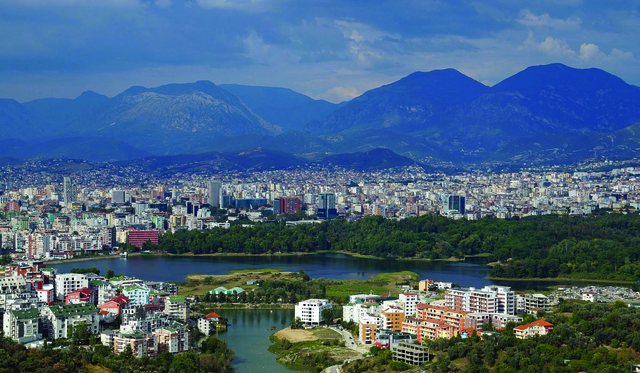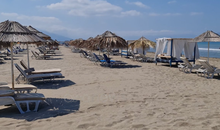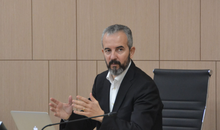
 Flash News
Flash News
A stable in Fier is engulfed in flames, agricultural equipment and haystacks are burned
Taulant Xhaka is introduced as a player-coach of the Albanian team in Switzerland
Iranian Foreign Minister Admits Serious Damage to Nuclear Power Plants
He bought votes for his daughter, SPAK takes the father of the PSD candidate to trial
Russia prepares summer offensive with help from North Korean troops in Ukraine
How many people live in one square kilometer? Albania and Tirana, a record in the region

In the Albanian capital, 562 people live in one square kilometer.
In Tirana, the population density per kilometer is more than five times higher than the national average. After Tirana, comes Shkodra, with 251 inhabitants per square kilometer. Gjirokastra has fewer inhabitants, with only 21.
Compared to other countries in the region, the Albanian capital has the highest population density, according to data made public by Eurostat. With a narrow margin is Belgrade of Serbia (536), followed by Skopje of North Macedonia (536).
Even as a country, Albania dominates the region, with 99 inhabitants per square kilometer. Serbia comes second with 90.5, followed by North Macedonia with 73.7. Montenegro, which is reported only as a state, has a density of 45.6 inhabitants per square kilometer, among the lowest in Europe. Data for Kosovo and Bosnia and Herzegovina are missing.
Although in the region, Albania and the capital have the highest density, still the indicator is much lower than in other countries, especially the big capitals.
The record is held by Paris with 20.5 thousand inhabitants living in one square kilometer. In the center of Athens, the density is 11.3 thousand, in Brussels 7.7 thousand, in Vienna almost 5 thousand. In Rome, there are 799 inhabitants per square kilometer, in Madrid 855. In Istanbul, about 3 thousand people live in an area of one kilometer.
In terms of country, Albania is ranked 21st, out of 37 countries reported by Eurostat. The record in Europe is held by Malta (1693), the Netherlands (518), Belgium (384), the United Kingdom (275) and at the bottom of the list is Iceland, where you find only 3.8 inhabitants per square kilometer.
In Tirana the population density increases, in Albania it decreases
After the 90s, the capital has been a magnet to attract residents coming from the districts. Tirana and Durrës are the only ones that have recorded internal emigration, while other cities have seen a continuous decrease in population, due to the decrease in emigration and births.
According to Eurostat, compared to 2012, the density of Tirana has increased by 18%, or by 84 more inhabitants per square kilometer. Meanwhile, for the entire country, the population density has decreased by about 2% for the same period.
According to Eurostat, population density in the EU ranges from 18 to 1,693 people per km².
Population density, meaning the number of people per square kilometer (km²), averaged 109 people per km² in the EU in 2022.
This value varied significantly between EU countries. The highest population density was observed in Malta (1 693 persons per km²), followed by the Netherlands (518) and Belgium (384). On the other hand, Finland (18 people per km²) and Sweden (26) had the lowest population density.
Compared 2022 to 2002, there was an increase in population density in 18 of the EU countries, with the largest increases in Malta (from 1 255 to 1 693 persons per km²), Luxembourg (from 173 to 253) and Belgium (341 to 384).
Romania (95 to 81) and Bulgaria (71 to 60) had the biggest decreases. On average in the EU, the population density increased from 105 people per km² to 109 during this period./ Monitor
Latest news


Residents of Astir denounce the mixing of drinking water with sewage
2025-06-27 22:29:46
The counterfeiter of the nation
2025-06-27 21:58:15




Trump speaks again about Kosovo and Serbia: they are about to clash in a big war
2025-06-27 21:10:27
Tragedy in France/ Plane crashes, 3 people die
2025-06-27 20:54:17
BIRN: Here's who covered Rama's private jet trip to The Hague airport
2025-06-27 20:40:58

Adorable or just plain weird? How Labubu dolls took over the world
2025-06-27 20:07:29
Analysis/ How did the US use penetrating bombs on Iran's nuclear facilities?
2025-06-27 20:01:37
Tourist Vlora with waste incineration!
2025-06-27 19:41:46

Cristiano Ronaldo renews contract with Al Nassr until 2027
2025-06-27 19:17:59

Iranian Foreign Minister Admits Serious Damage to Nuclear Power Plants
2025-06-27 18:50:21


Michelle Obama reignites divorce rumors with Barack Obama
2025-06-27 18:10:15



Ukraine seeks Zelensky-Putin meeting after talks on humanitarian issues
2025-06-27 17:16:08

Car hits 16-year-old with motorcycle in Vau e Dejës
2025-06-27 16:36:06
Italian tourist dies of cardiac arrest in Zvërnec
2025-06-27 16:26:10
Russia prepares summer offensive with help from North Korean troops in Ukraine
2025-06-27 16:15:18

Bad news for migrants, Germany temporarily suspends family reunifications
2025-06-27 15:46:05
Alizoti: Here's when the internal analysis in the DP will begin
2025-06-27 15:33:59

Four reasons why you can't sleep at night
2025-06-27 15:08:40
Two elderly men rape 38-year-old woman in Tirana
2025-06-27 14:59:36
Italian dies on Zvërnec beach
2025-06-27 14:49:14
Love at first sight and separation, unpredictable July for signs!
2025-06-27 14:31:49
Veliaj 'fights' corruption allegations with PR campaign on TikTok
2025-06-27 14:23:10
Gas cylinder explodes in Shëngjin, injuring a woman
2025-06-27 14:09:39
Environmental scandal in Vjosa, prosecution of oil decantation responsibility
2025-06-27 13:58:57
Gray hair is not caused by age, stress burns pigment cells from the inside
2025-06-27 13:50:02
33-year-old man found dead in Elbasan
2025-06-27 13:36:26


Criminal who helped inspire 'Stockholm syndrome' theory dies
2025-06-27 13:19:50


Guard found hanging in the building where he worked in Vlora
2025-06-27 12:51:44
Party political interest versus national interest
2025-06-27 12:43:06
Tabaku: The crisis in the pockets of Albanians is a consequence of misgovernment
2025-06-27 12:30:38


CEC distributes mandates for MPs in 4 districts
2025-06-27 12:02:23



Haxhiu: If I don't get 61 votes in a secret ballot, I will withdraw
2025-06-27 11:24:32
Access to the e-mails of 3 SPAK prosecutors, Zamblak Gjonaj remains in prison
2025-06-27 11:06:45

Flamur Noka appears in SPAK
2025-06-27 10:40:04




Accused of being part of a criminal group, 23-year-old arrested in Vau e Dejës
2025-06-27 09:41:31
What does Kosovo risk from the lack of new institutions?
2025-06-27 09:32:57
At risk of starvation, Israel closes aid route to Palestinians in Gaza
2025-06-27 09:21:58

Consecutive earthquake tremors in Tirana
2025-06-27 09:02:51
Does baking soda help with diabetes problems?
2025-06-27 08:53:29
TNT explosion in a shop in Fushe Kruja
2025-06-27 08:46:49

Horoscope, what do the stars have in store for you today?
2025-06-27 08:20:01
Weather forecast, how temperatures will change during the day
2025-06-27 08:04:57
Morning Post/ In 2 lines: What mattered yesterday in Albania
2025-06-27 07:52:35

Race for the head of BKH/ Bushati: Only those who bow down make a career
2025-06-26 22:41:37
Lapaj: We can merge into a party with 'Nisma Thurje'
2025-06-26 22:25:53
Vote recount, Lubonja: Electoral manipulation took place before May 11
2025-06-26 22:12:23
Health Center inside the sports field, the wonder of the next project in Lushnje
2025-06-26 22:00:10


"The Task Force acted selectively"/ Bushati: SPAK was a government tool!
2025-06-26 21:33:19



Accident in Lezha, 69-year-old loses control and hits 4 parked vehicles
2025-06-26 20:51:34


KPA upholds dismissal of judge Avni Sejdi
2025-06-26 20:15:54



Accident in Lezha, car ends up in the parking lot of a playground
2025-06-26 19:35:03
Special court for the war in Ukraine, Zelensky signs the agreement in Strasbourg
2025-06-26 19:17:43



Report/ Albanian healthcare between limited transparency and under-financing
2025-06-26 18:34:34
